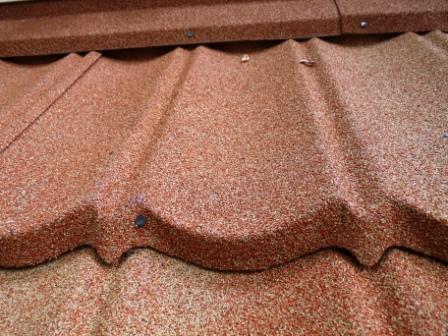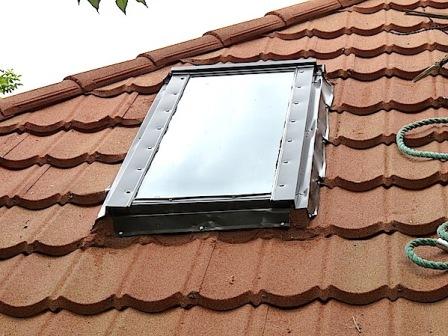Mastering Roof Inspections: Metal Roofs, Part 9
by Kenton Shepard and Nick Gromicko, CMI®
The purpose of the series “Mastering Roof Inspections” is to teach home inspectors, as well as insurance and roofing professionals, how to recognize proper and improper conditions while inspecting steep-slope, residential roofs. This series covers roof framing, roofing materials, the attic, and the conditions that affect the roofing materials and components, including wind and hail.
Metal roofing is also available as shingles. Shingles come in a variety of types.
Flat Shingles

You may see flat shingles that are flat and smooth, such as those pictured above. These shingles were installed on a home in California within a half-mile of the coast, which would account for the corrosion.
Formed Metal Shingles
Metal shingles are typically formed. They can be designed to mimic shakes, like those you see here. These shingles are smooth and somewhat low-end.


High-end metal shingles are usually covered with a coating similar to asphalt shingle granules. They’re commonly called stone-coated.

This one is designed to mimic shakes …

…and this one is designed to mimic tile.

From a distance, these metal shingles might be mistaken for clay tiles, but clay tiles don’t often bend when they’re stepped on.

Formed metal shingles are usually made of relatively light-gauge metal and are easily damaged by walking on them. To put it simply: Don’t walk them.
Metal Shingle Installation
Because of the different styles and installation methods used, you’ll be using common sense and good judgment when looking for defects in metal shingle roofs. Let’s look at some examples.
At the sidewall in the photo below, you can see that the counter-flashing is installed over the wood shingles instead of behind them. This can allow precipitation and runoff to enter behind the flashing.

Metal shingles usually come in strips, similar to asphalt shingles. They’re seldom supplied as individual shingles. The vertical joints between strips, visible in the photo above, should be offset to reduce the chance of leakage.
Hip and Valley Installation
Hips and valleys are especially vulnerable to leakage. Hip-cap shingles can be torn off by wind, leaving the roof open to the weather. Valleys are exposed to more runoff than the rest of the roof.
Installation methods vary with the different types of shingles. Below are some photos taken of installation during construction.



Although you generally won’t be able to confirm compliance with the manufacturer’s recommended installation, you can look closely to evaluate the ability of the installation to prevent moisture entry.

One thing you might want to disclaim in this type of installation is the connection to the roof. In the photo above, you can’t tell much about the quality of the connection of the roof, even with the battens exposed. You can see that some of the nailing looks sloppy, though.
A batten nailed with a 12-penny gun nail measuring a little over 3 inches (the nail-gun version of a hand-driven, 16-penny, vinyl-coated sinker) may penetrate into the hip rafter only ½-inch or so by the time the nail has passed through the batten, cap shingles, shingles, underlayment, roof sheathing, and the gap between the sheathing and the hip.
Once installation is complete, you’ll have no way of knowing how the system is fastened to the roof or how well it might resist uplift.
Skylight Installation

Skylight flashing varies with the type of shingle. Disclaim it if you don’t feel qualified to evaluate. Recommend further evaluation by a qualified contractor.
Rakes

**************************************************
Learn how to master a roof inspection from beginning to end by reading the entire InterNACHI series: Mastering Roof Inspections.
Take InterNACHI’s free, online Roofing Inspection Course
Mastering Roof Inspections
Roofing Underlayment Types
Inspecting Underlayment on Roofs
Fall-Arrest Systems
Roofing (consumer-targeted)
More inspection articles like this

